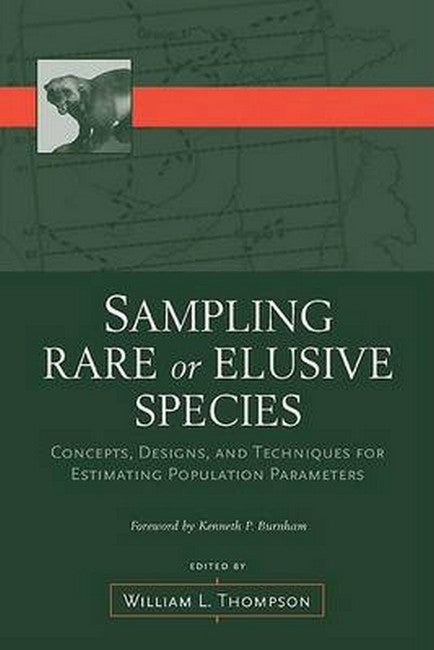Foreword
Acknowledgments
Chapter 1. Introduction
PART I. Overview and Basic Concepts
Chapter 2. Sampling Rare Populations
Chapter 3. Separating Components of Detection Probability in Abundance Estimation: An Overview with Diverse Examples
Chapter 4. Indexes as Surrogates to Abundance for Low-Abundance Species
PART II. Sampling Designs for Rare Species and Populations
Chapter 5. Application of Adaptive Sampling to Biological Populations
Chapter 6. Two-Phase Adaptive Stratified Sampling
Chapter 7. Sequential Sampling for Rare or Geographically Clustered Populations
PART III. Estimating Occupancy
Chapter 8. Occupancy Estimation and Modeling for Rare and Elusive Species
Chapter 9. A Bayesian Approach to Estimating Presence When a Species is Undetected
Chapter 10. Searching for New Populations of Rare Plant Species in Remote Locations
PART IV. Estimating Abundance, Density and Other Parameters
Chapter 11. Using Non-invasive Genetic Sampling to Detect and Estimate Abundance of Rare Wildlife Species
Chapter 12. Photographic Sampling of Elusive Mammals in Tropical Forests
Chapter 13. Using Probability Sampling of Animal Tracks in Snow to Estimate Abundance
Chapter 14. Sampling Rockfish Populations: Adaptive Sampling and Hydroacoustics
Chapter 15. Survival Estimation in Bats: Historical Overview, Critical Appraisal, and Suggestions for New Approaches
Chapter 16. Evaluating Methods for Monitoring Populations of Mexican Spotted Owls: A Case Study
PART V. The Future
Chapter 17. Future Directions in Estimating Abundance of Rare or Elusive Species
Reviewers
About the Editor
Index
Acknowledgments
Chapter 1. Introduction
PART I. Overview and Basic Concepts
Chapter 2. Sampling Rare Populations
Chapter 3. Separating Components of Detection Probability in Abundance Estimation: An Overview with Diverse Examples
Chapter 4. Indexes as Surrogates to Abundance for Low-Abundance Species
PART II. Sampling Designs for Rare Species and Populations
Chapter 5. Application of Adaptive Sampling to Biological Populations
Chapter 6. Two-Phase Adaptive Stratified Sampling
Chapter 7. Sequential Sampling for Rare or Geographically Clustered Populations
PART III. Estimating Occupancy
Chapter 8. Occupancy Estimation and Modeling for Rare and Elusive Species
Chapter 9. A Bayesian Approach to Estimating Presence When a Species is Undetected
Chapter 10. Searching for New Populations of Rare Plant Species in Remote Locations
PART IV. Estimating Abundance, Density and Other Parameters
Chapter 11. Using Non-invasive Genetic Sampling to Detect and Estimate Abundance of Rare Wildlife Species
Chapter 12. Photographic Sampling of Elusive Mammals in Tropical Forests
Chapter 13. Using Probability Sampling of Animal Tracks in Snow to Estimate Abundance
Chapter 14. Sampling Rockfish Populations: Adaptive Sampling and Hydroacoustics
Chapter 15. Survival Estimation in Bats: Historical Overview, Critical Appraisal, and Suggestions for New Approaches
Chapter 16. Evaluating Methods for Monitoring Populations of Mexican Spotted Owls: A Case Study
PART V. The Future
Chapter 17. Future Directions in Estimating Abundance of Rare or Elusive Species
Reviewers
About the Editor
Index

